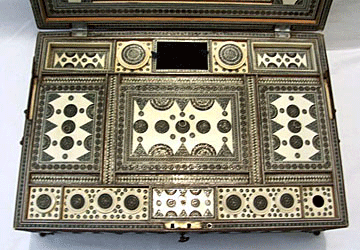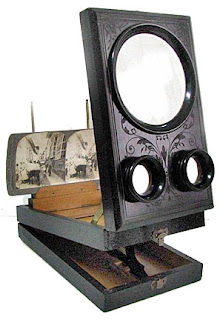 QUESTION: Recently while browsing in an antique shop, I came upon a strange-looking object. It appeared to be made of clay in the shape of a short log and had what looked like a hole on top in which rested a stopper. Both ends were closed and rounded, with a chunky knob protruding from the front end. The antiques dealer told me it was a hot water bottle. The only hot water bottles I know of are the ones made of rubber. Can you tell me more about this object?
QUESTION: Recently while browsing in an antique shop, I came upon a strange-looking object. It appeared to be made of clay in the shape of a short log and had what looked like a hole on top in which rested a stopper. Both ends were closed and rounded, with a chunky knob protruding from the front end. The antiques dealer told me it was a hot water bottle. The only hot water bottles I know of are the ones made of rubber. Can you tell me more about this object?
ANSWER: The strange object is indeed a hot water bottle. Few things compare to the cozy warmth provided by a hot water bottle. Before the invention of the rubber hot water bottle, most people used one made of stoneware. Though these were heavy and clunky, they served the purpose.
 Most people had one hot water bottle in the house. Made of stoneware, a white clay fired at a high temperature and glazed so that it resembled polished stone, so most people called it just a “stone.” However, the Scottish children saw a bit of whimsy in them, believing that they looked like a little pig, so they coined the name “Bed Pig.” Actually, the name “pig” isn’t related to pigs at all. It's a Scottish word for a round pot.
Most people had one hot water bottle in the house. Made of stoneware, a white clay fired at a high temperature and glazed so that it resembled polished stone, so most people called it just a “stone.” However, the Scottish children saw a bit of whimsy in them, believing that they looked like a little pig, so they coined the name “Bed Pig.” Actually, the name “pig” isn’t related to pigs at all. It's a Scottish word for a round pot.
The seals on these bottles weren’t very good, so naturally people used them only when it was bitterly cold. Often the stone cap would be replaced with a cork to seal in the hot water. Though they were heavy, they could still crack and leak, which would burn whoever was in bed and make the bed wet.
Some mothers believed that it was healthy to get into a cold bed. In winter it was usually very cold in bed, as most people didn’t light fires in their bedrooms for fear of falling asleep with the fire going. Also, windows had single glazing, not like the multiple glazing of those today. It wasn’t uncommon for people to wake up to ice on the insides of their windows from frozen condensation.
Stoneware hot water bottles had been around since the early 19th century and perhaps before. The idea was to fill them with hot water, close the stopper securely and stand them in a bed, upright, on their small flat ends so that the sheets and blankets formed a tent-like structure over them. The peak of the '”ent” was the special feature of the rounded knob opposite the flat end, which also served as a carrying handle. One of the primary manufacturers of stoneware hot water bottles was Langley Ware of England.
People believed that using the hot water bottle this way heated more of the bed, but it was an unstable arrangement and the “tent” would have been quite small, as even with the knob to give extra height, the hot water bottle, itself, stood only about a foot tall. To make sure the entire bed warmed up, users would move them around in the bed periodically for an hour or two before climbing into bed.
 Large stoneware hot water bottle also served as a foot warmer. The stoneware hot water bottle was cylindrical but also had a flat side. Ladies would fill the bottle with hot water and lay it on its side on the floor in front of a chair by the fire. Since they wore long dresses, they could take off their shoes and place their feet on the rounded top of the bottle, then pull the skirt of their dress over their feet to hide them. This way no one could see that they had taken off their shoes and were warming their feet. They often took these bottles with them in the carriage when the weather was very cold, doing much the same thing as they did in their parlors.
Large stoneware hot water bottle also served as a foot warmer. The stoneware hot water bottle was cylindrical but also had a flat side. Ladies would fill the bottle with hot water and lay it on its side on the floor in front of a chair by the fire. Since they wore long dresses, they could take off their shoes and place their feet on the rounded top of the bottle, then pull the skirt of their dress over their feet to hide them. This way no one could see that they had taken off their shoes and were warming their feet. They often took these bottles with them in the carriage when the weather was very cold, doing much the same thing as they did in their parlors.
Hot water was also used in glass or ceramic pots that sealed in the hot water with a cork. Not many glass hot water bottles survived but the ceramic containers continued in production for many years well into the 20th century.
Because they were mass produced and very robust, many stoneware hot water bottles have survived, so their antique value isn’t a lot. But many can still be used today and will be for years to come to keep people warm and toasty on a cold winter’s night.
To read more articles on antiques, please visit the Antiques Articles section of my Web site. And to stay up to the minute on antiques and collectibles, please join the over 50,000 readers by following my free online magazine, #TheAntiquesAlmanac. Learn more about "Sacred Artifacts" in the 2025 Holiday Edition, online now. And to read daily posts about unique objects from the past and their histories, like the #Antiques and More Collection on Facebook.



















































